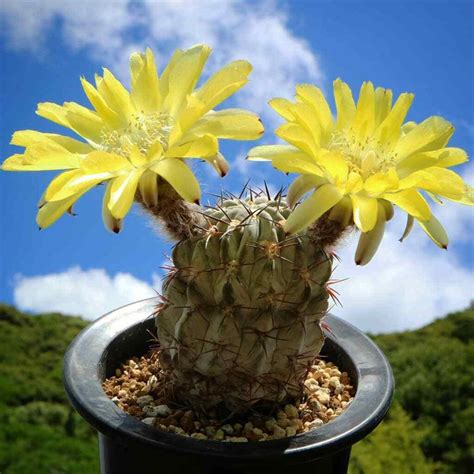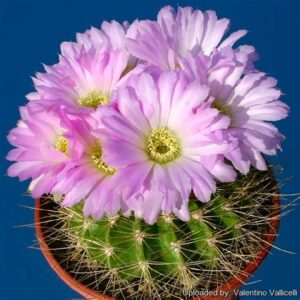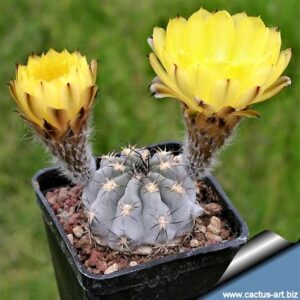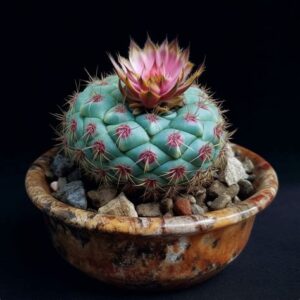The world of cacti is filled with diverse genera, yet few capture the intrigue of both novice and veteran horticulturists quite like Acanthocalycium. These remarkable cacti, native to the arid landscapes of South America, exemplify a striking array of forms and colors. But, as with any plant cultivation, understanding climate hardiness is crucial for successful growth. This article delves into the hardiness zones, optimal growing conditions, and practical tips for thriving Acanthocalycium specimens.
Recognizing the Importance of Hardiness Zones
Hardiness zones are delineated areas that predict the likelihood of plant survival in various geographic locales, based primarily on temperature extremes. The map, developed by the U.S. Department of Agriculture (USDA), classifies regions from zone 1, where temperatures can plummet below -50°F, to zone 13, which rarely goes below 60°F. For Acanthocalycium enthusiasts, knowing your hardiness zone is imperative, as these cacti are predominantly sensitive to frost but can thrive in varying heat levels.
Acanthocalycium cacti generally flourish in USDA zones 9 through 11. These zones feature winter temperatures exceeding 20°F, ideal for most species of the genus. For regions straddling these boundaries, protective measures are critical, as exposure to freezing temperatures can lead to significant damage or even plant mortality.
Temperature Tolerance and Frost Resistance
To optimize growth and flowering, it is necessary to comprehend the temperature limits of Acanthocalycium. Generally, these cacti can endure short periods of temperatures as low as 20°F, particularly if they are well-established and have proper drainage, which is essential. However, extended exposure to cold builds a precarious situation for these plants. Home gardeners need to ensure proper insulation, which could include bringing potted cacti indoors during colder months or utilizing frost cloths as protective coverings.
Once the danger of frost has passed, Acanthocalycium cacti tend to respond beautifully to warmer temperatures. Growth typically accelerates when day temperatures rise consistently into the 70s°F. However, it is vital to consider that excessive heat above 100°F may result in sunburn or heat stress, particularly if plants are not acclimated to such conditions. Proper orientation within a garden space—ensuring the right balance of sun and partial shade—can drastically improve the resilience of these cacti to temperature extremes.
Identifying Ideal Growing Conditions
Beyond temperature, Acanthocalycium requires the right conditions to thrive. These cacti flourish in arid, well-draining soils that mitigate the risk of rot. The classic potting mix for these species comprises gritty materials such as perlite, pumice, and coarse sand, which facilitate drainage while retaining minimal moisture. It is equally important to avoid standard garden soil, as it typically retains too much water, putting the plant at risk.
Light Requirements and Respiration
Light is an equally vital aspect of Acanthocalycium care. These cacti thrive best under bright, indirect sunlight. Too much direct sunlight may lead to scalding; too little can stunt growth and reduce flowering. An ideal scenario is to place Acanthocalycium in locations where they receive at least six hours of filtered light daily, allowing their tissues to photosynthesize effectively without risk of overexposure. In indoor gardening, east-facing windows are advantageous, whereas west-facing windows may need sheer curtains or shading to prevent heat stress.
Watering Practices for Sustainable Growth
Acanthocalycium is not only drought-tolerant but also requires careful watering practices to maintain optimal health. Overwatering is the most common mistake for both amateur and seasoned gardeners. Typically, allowing the top inch of soil to dry out between watering sessions is a sound strategy. In the active growing season—typically spring and early summer—this may mean irrigation every two to three weeks. In the autumn and winter, watering should be minimized as the plant enters dormancy, reducing any risk of rot.
The Role of Fertilization
Another essential aspect of Acanthocalycium care involves the use of fertilizer. These cacti will benefit from diluted cactus formula or balanced fertilizers during the growing season to support their development. Fertilizing should be done quarterly, facilitating vigorous growth while avoiding any potential toxicity that may arise from excessive nutrient application.
Common Pests and Diseases
Despite their hardy nature, Acanthocalycium is vulnerable to specific pests and diseases. Aphids, mealybugs, and spider mites can easily infiltrate Acanthocalycium and affect their overall health. Regular inspection and prompt intervention are crucial to mitigate infestation. Neem oil or insecticidal soaps serve as effective solutions for pest management, leaving your plants healthy and thriving.
Acclimating to Environmental Factors
As cacti are largely resilient, environmental acclimatization plays an important role in their survival. Upon acquiring a new Acanthocalycium specimen, it is prudent to gradually introduce it to your home environment to avoid shocking the plant. Begin by allowing your new cactus to settle in a stable area for a few days, slowly exposing it to light and temperature levels typical of your home. This gradual acclimation can bolster the plant’s immunity and growth potential.
Experimenting with Propagation Techniques
For those looking to expand their Acanthocalycium collection or share these unique cacti with friends and family, propagation is an exciting possibility. Generally, Acanthocalycium can be propagated via seeds or offsets. Seed propagation provides a broader genetic variety but requires patience, as it may take time for seedlings to establish. On the other hand, offset propagation is often faster and yields plants similar to the parent. Ensuring that any cuttings or offsets are allowed to dry and callous over before planting is crucial to prevent rot.
Including Acanthocalycium in Your Landscape Design
Integrating Acanthocalycium into your landscape design not only adds visual interest but also emphasizes low-maintenance gardening. Choosing a natural rocky or desert-inspired garden layout enhances their inherent beauty while providing optimal environmental conditions. Grouping Acanthocalycium with other drought-tolerant succulents can create a striking focal point while minimizing water usage in arid landscapes. Understanding the principles of hardiness and adapting your growing practices is the key to nurturing the remarkable Acanthocalycium.
The Journey to Successful Cactus Cultivation
Embarking on the journey of Acanthocalycium cultivation is undoubtedly rewarding, as these cacti offer a unique aesthetic and a remarkable opportunity to connect with nature. By understanding their hardiness zones and specific needs, you are better equipped to foster thriving plants. Recognize the interdependence of temperature, soil condition, light exposure, and water management. Armed with this knowledge, you can successfully cultivate Acanthocalycium and elevate your gardening experience to new heights.





Leave a Comment